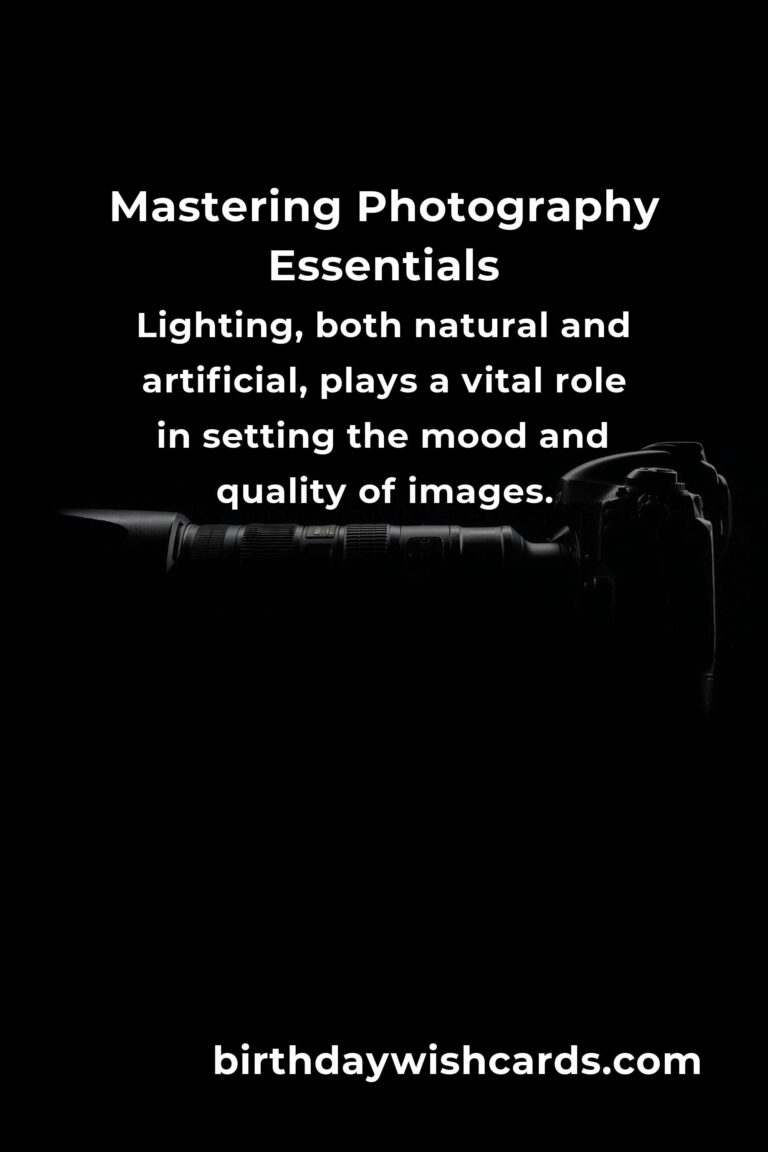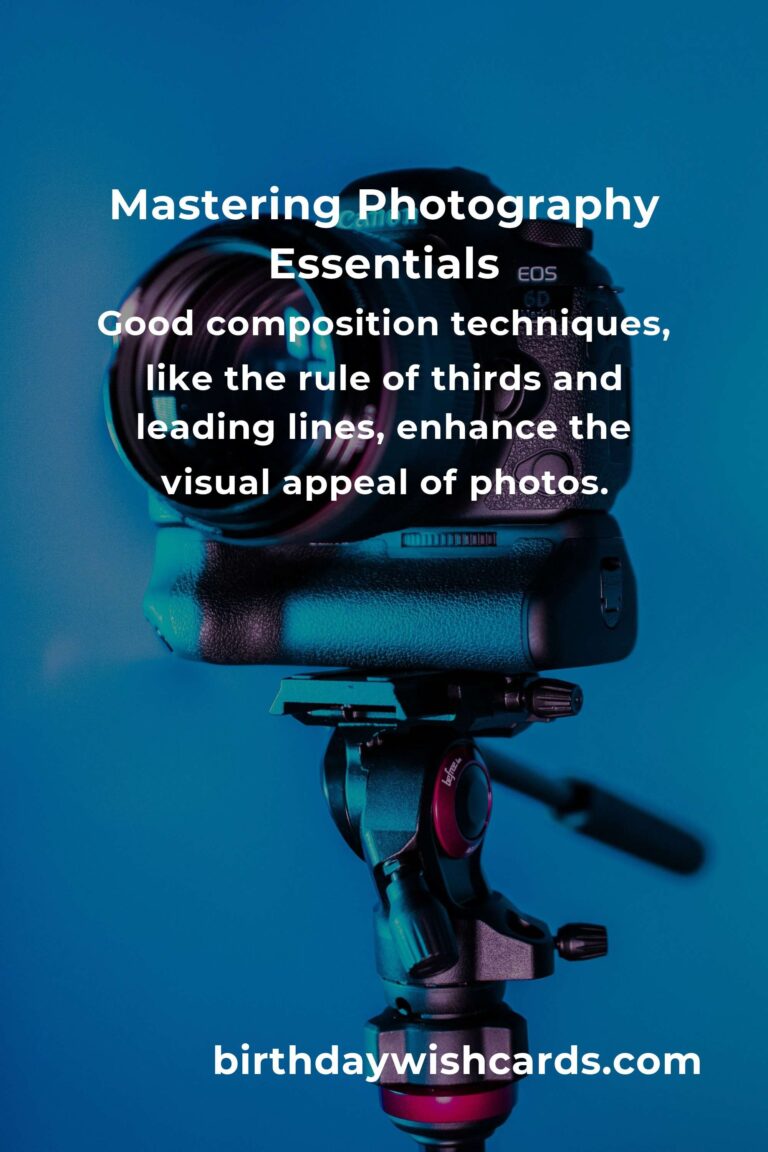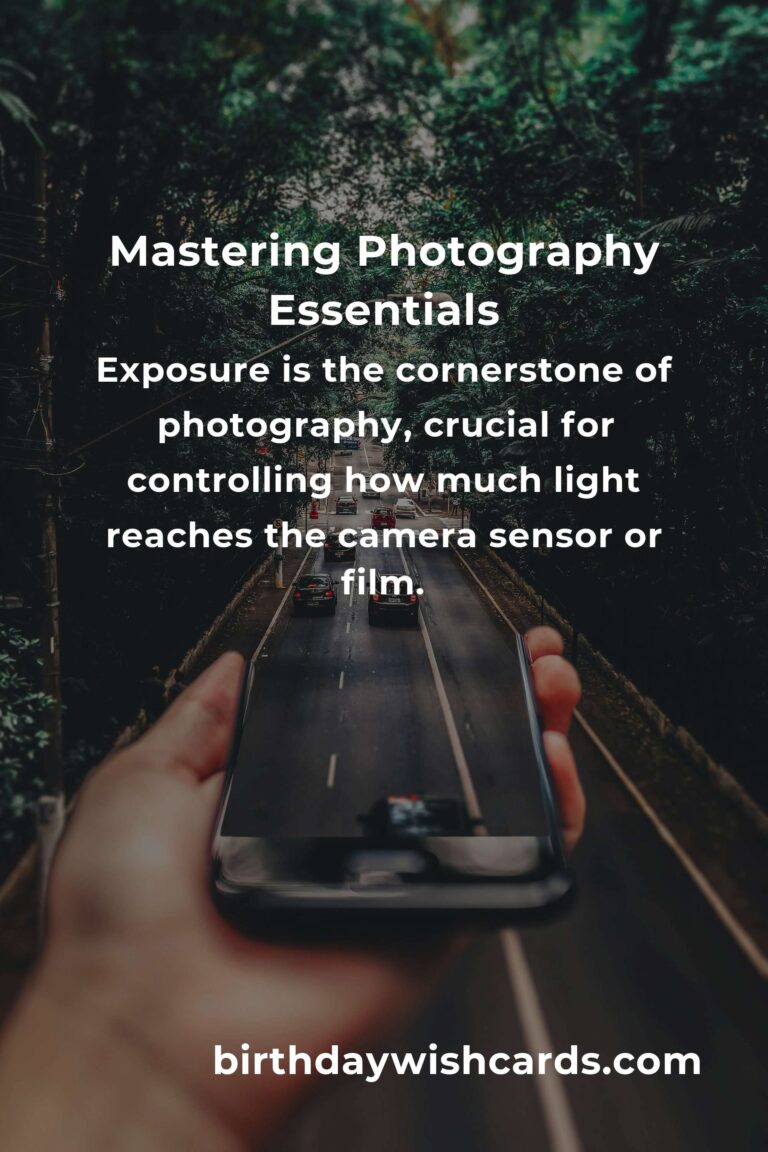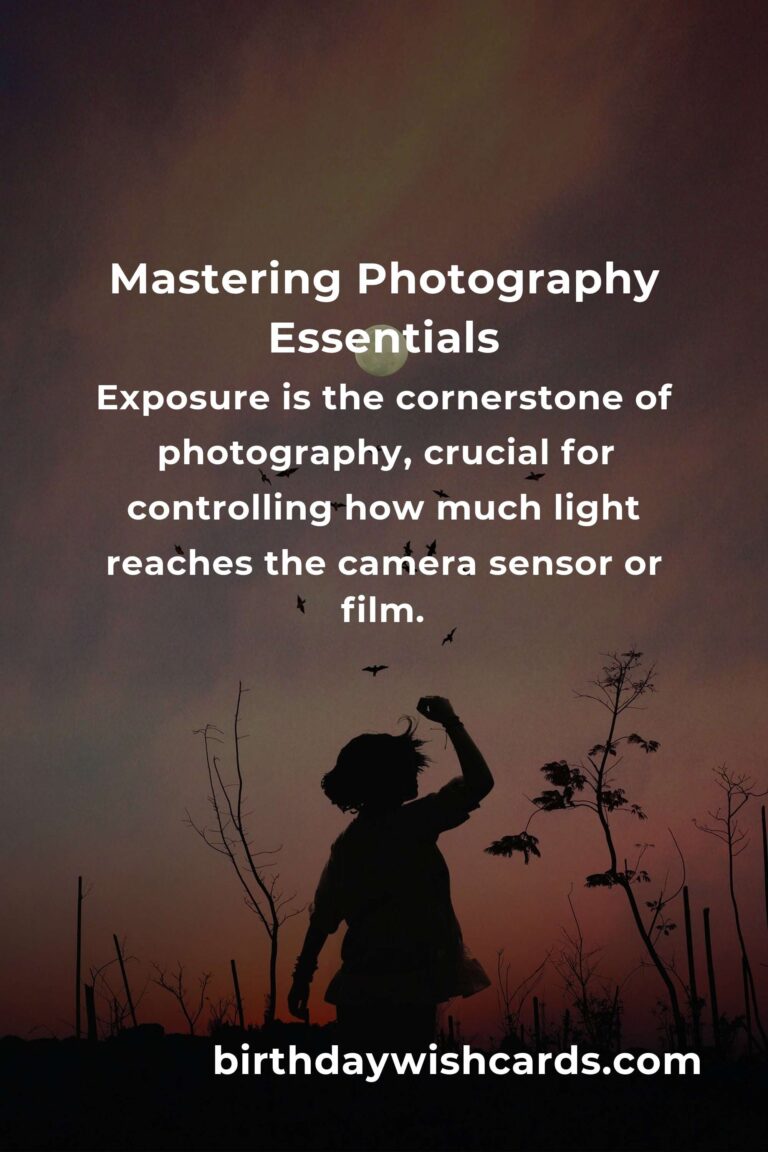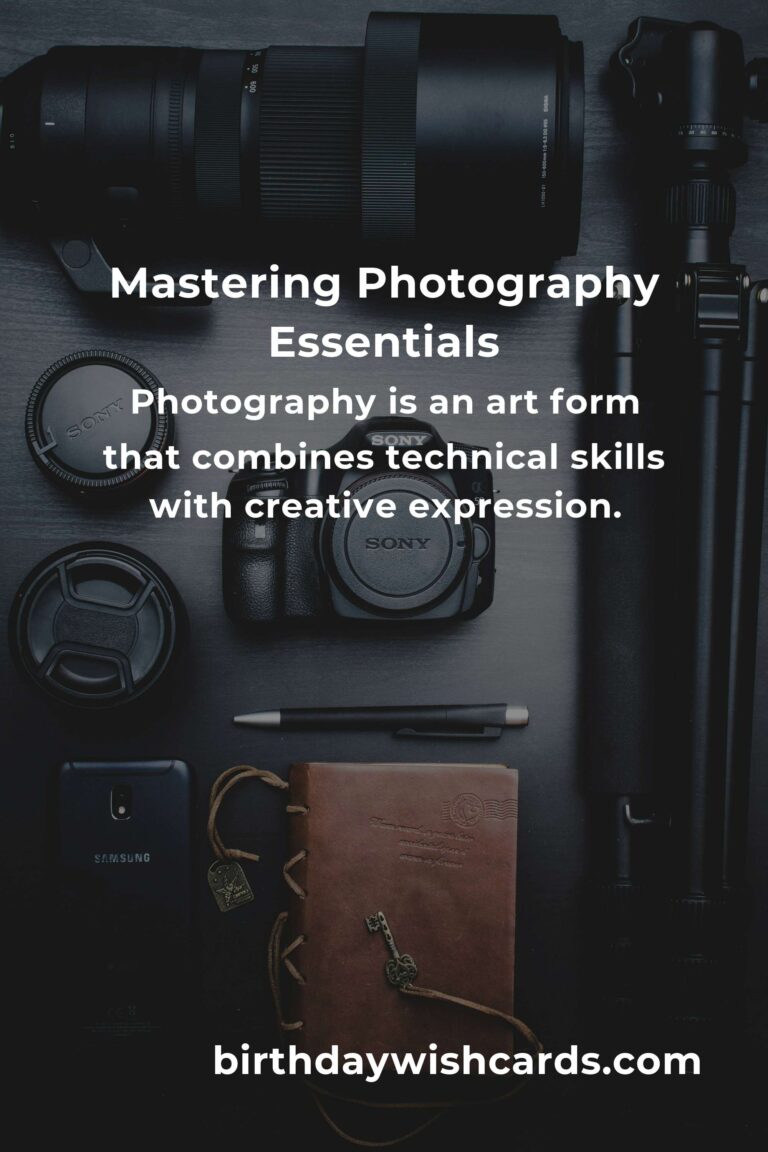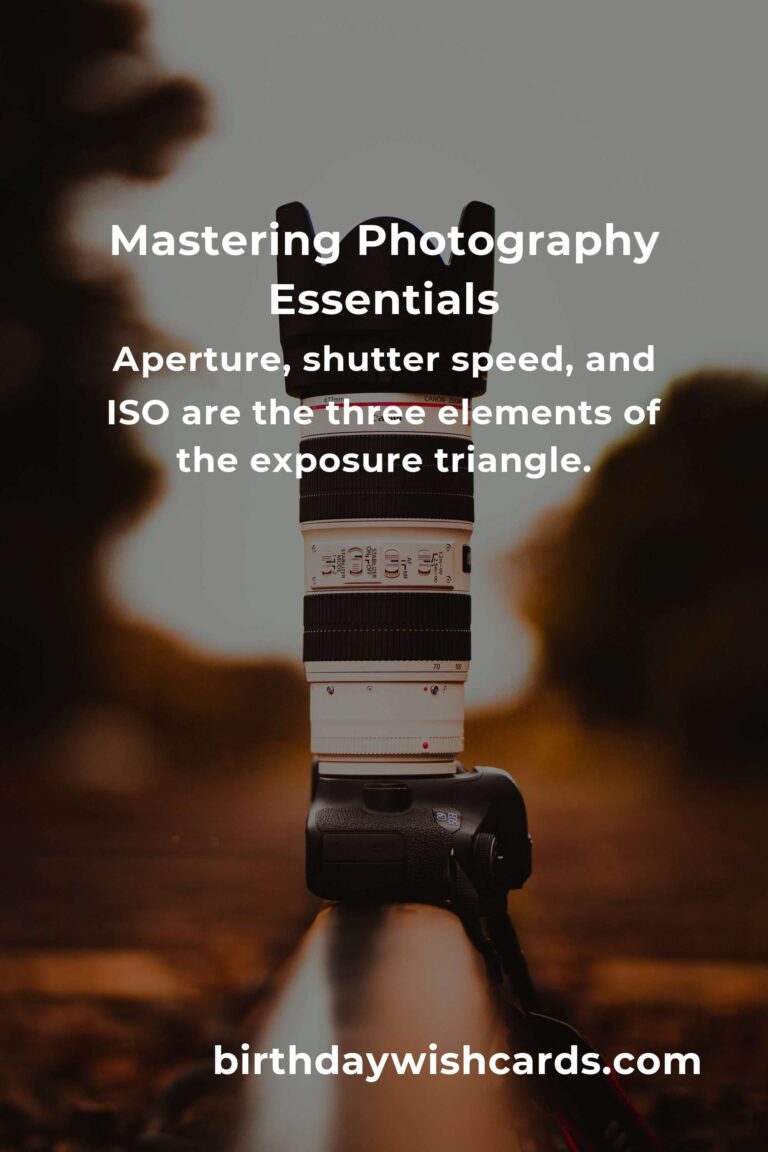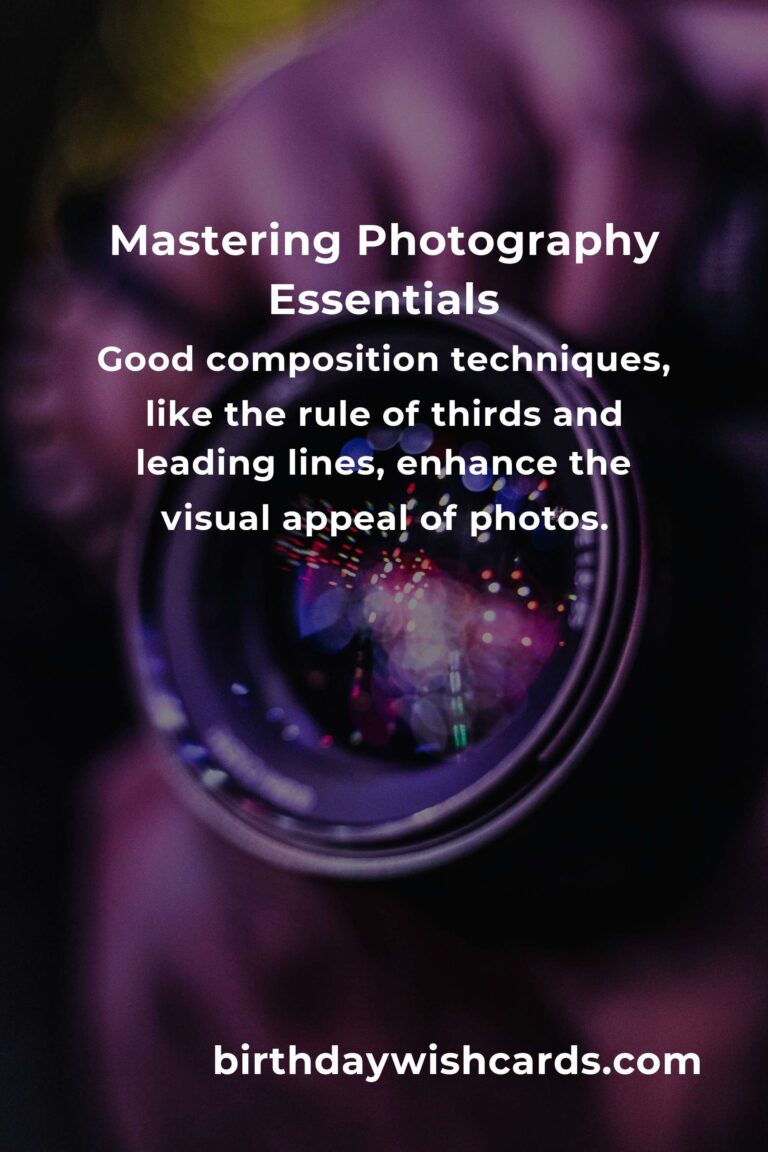
Photography is an art form that combines technical skills with creative expression. Whether you are a novice or an experienced photographer, understanding the fundamentals is crucial to capturing stunning images. This guide will delve into the key elements of photography, offering expert advice to help you master the basics and enhance your photographic skills.
Understanding Exposure
Exposure is the cornerstone of photography. It refers to how much light reaches the camera sensor or film, determining the brightness of your image. The exposure triangle consists of three elements: aperture, shutter speed, and ISO. Mastering these elements will allow you to control the exposure and achieve the desired effect in your photos.
Aperture
Aperture is the opening in a lens through which light passes to enter the camera. It is measured in f-stops. A lower f-stop number means a larger aperture, allowing more light to hit the sensor. This affects the depth of field, which is the area in focus in an image. A larger aperture (lower f-stop) provides a shallow depth of field, perfect for portraits, while a smaller aperture (higher f-stop) increases the depth of field, ideal for landscapes.
Shutter Speed
Shutter speed determines how long the camera’s shutter remains open to expose light to the sensor. It is measured in fractions of a second. A fast shutter speed can freeze motion, making it excellent for action shots, while a slow shutter speed can create a motion blur effect, useful for capturing movement in a more artistic manner.
ISO
ISO measures the sensitivity of the camera sensor to light. A lower ISO value results in less sensitivity and finer grain, while a higher ISO increases sensitivity but can introduce noise. Balancing ISO with aperture and shutter speed is essential for achieving the right exposure in varying lighting conditions.
Composition Techniques
Composition is how the elements within a photo are arranged. Good composition draws the viewer’s eye into the picture and holds their attention. Here are some fundamental techniques to enhance your compositions:
Rule of Thirds
The rule of thirds involves dividing your image into nine equal segments by two vertical and two horizontal lines. Placing the subject along these lines or at their intersections can create more balanced and engaging compositions.
Leading Lines
Leading lines guide the viewer’s eye through the image, often to the main subject. They can be roads, rivers, fences, or any lines that lead to a point of interest.
Framing
Framing involves using elements within the scene to create a ‘frame’ around your subject. This technique can add depth and context to your image, drawing more focus to the main subject.
Lighting Essentials
Lighting is a critical component of photography that can significantly affect the mood and quality of your images. Understanding natural and artificial lighting will help you make the most of any situation.
Natural Light
Natural light varies throughout the day, creating different opportunities for unique photographs. The golden hour, shortly after sunrise or before sunset, is particularly favored for its warm tones and soft shadows.
Artificial Light
Artificial light, such as flash or studio lighting, can be manipulated to create desired effects. Learning to balance these with natural light will give you more control over your images.
Post-Processing and Editing
Editing is an integral part of the photographic process. Software like Adobe Lightroom and Photoshop can enhance your images through adjustments to exposure, color correction, and cropping. Remember, the goal of post-processing should be to enhance, not to alter the essence of the original image.
Conclusion
Mastering the fundamentals of photography requires practice, patience, and a willingness to experiment. By understanding and applying the principles of exposure, composition, and lighting, you will be well on your way to capturing images that resonate and impress. Keep exploring, learning, and most importantly, enjoy the journey of photography.
Photography is an art form that combines technical skills with creative expression. Exposure is the cornerstone of photography, crucial for controlling how much light reaches the camera sensor or film. Aperture, shutter speed, and ISO are the three elements of the exposure triangle. Good composition techniques, like the rule of thirds and leading lines, enhance the visual appeal of photos. Lighting, both natural and artificial, plays a vital role in setting the mood and quality of images.
#Photography #CameraBasics #PhotoTips #Exposure #Composition


